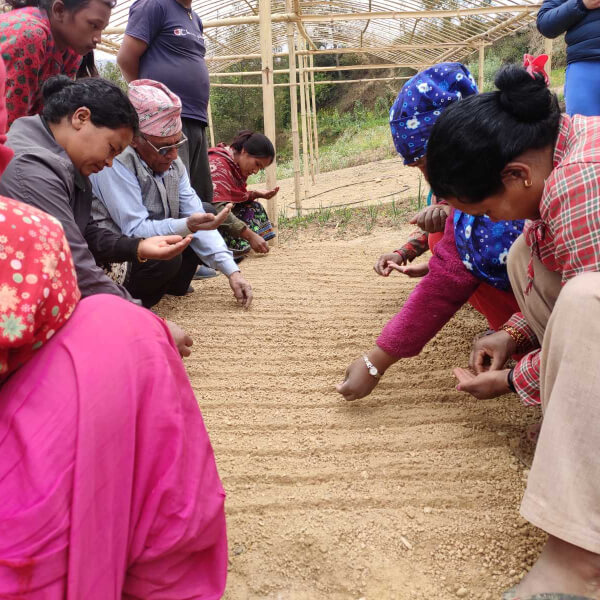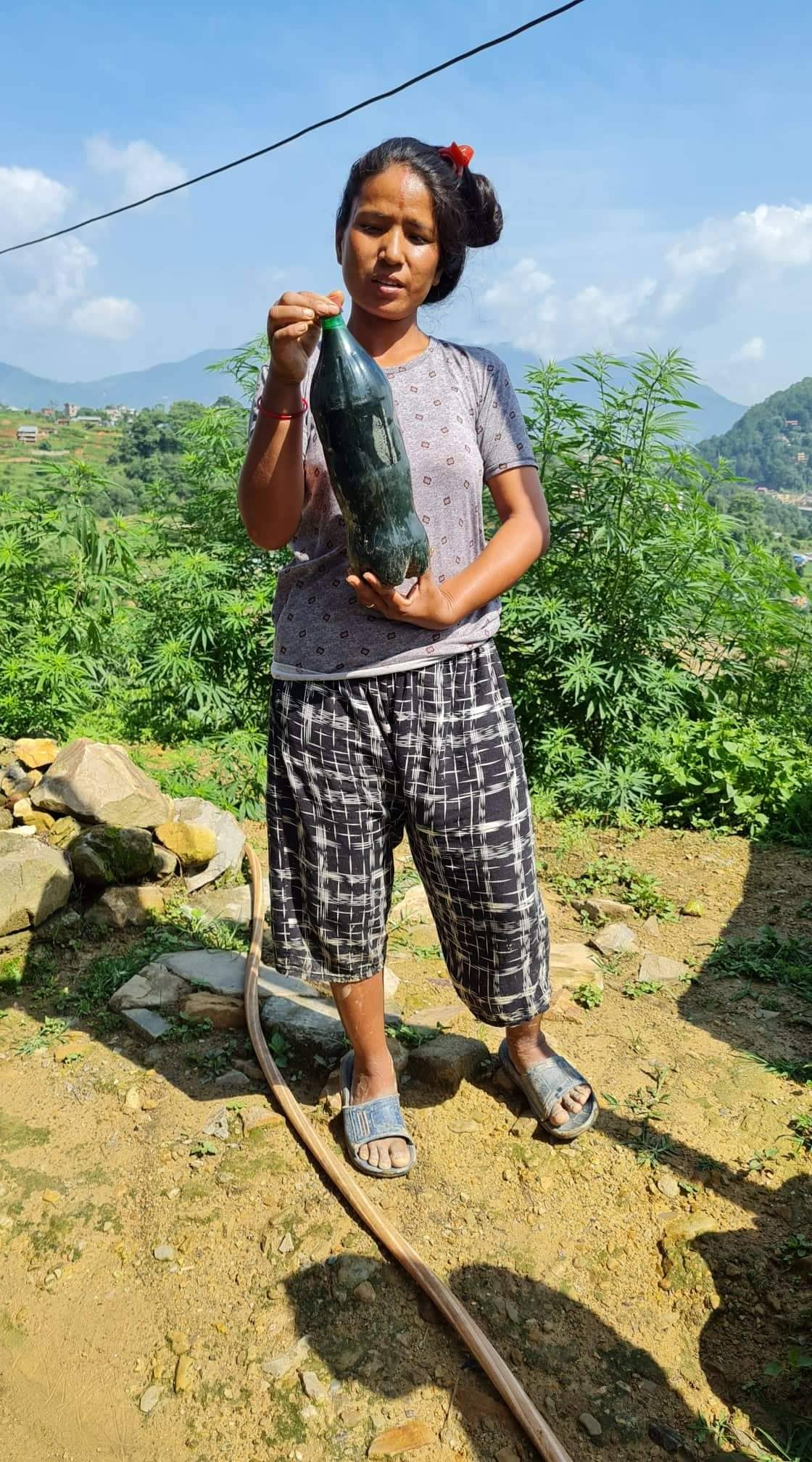Introduction
People in southern Lalitpur mostly grow rice, maize and barley for both household and income-generating purposes. Lately, people started to adopt seasonal vegetable farming with some doing tunnel farming. Still, the major agricultural practices were traditional and rain-fed, resulting in low production and insufficient to provide food around the year. However, daily wage works and other alternatives were bridging the gap in food supply during the lean months and the low yield periods, with people using such income to buy additional food supplies.
COVID-19 disrupted people’s reliance on additional income to supplement their food production. The resultant lockdown villagers did not have enough food in reserve to last more than a few months, and markets were also showing signs of food shortage responding to border closures and halt mobility. Although the villagers received some food assistance it was only a short-term solution.
The CBOs were worried about the issue and felt the need for a sustainable solution to food insecurity, not only addressing short-term food shortages but also to assure food security and better livelihood in the post-pandemic period. They identified subsistence farming gradually leading to commercialization as the solution. But, the absence of capital investment, limited access to agricultural inputs and food processing ideas, skills, and market opportunities were keeping people from achieving improved agricultural production and food security. Therefore, the ‘Diversified Vegetable Production for Food Security and Income Project’ was developed which envisions increasing food production for both home and market to make the community people financially capable and independent for their own survival, healthful living, and resilient against future food shortages.
This project resulted the following outcomes






